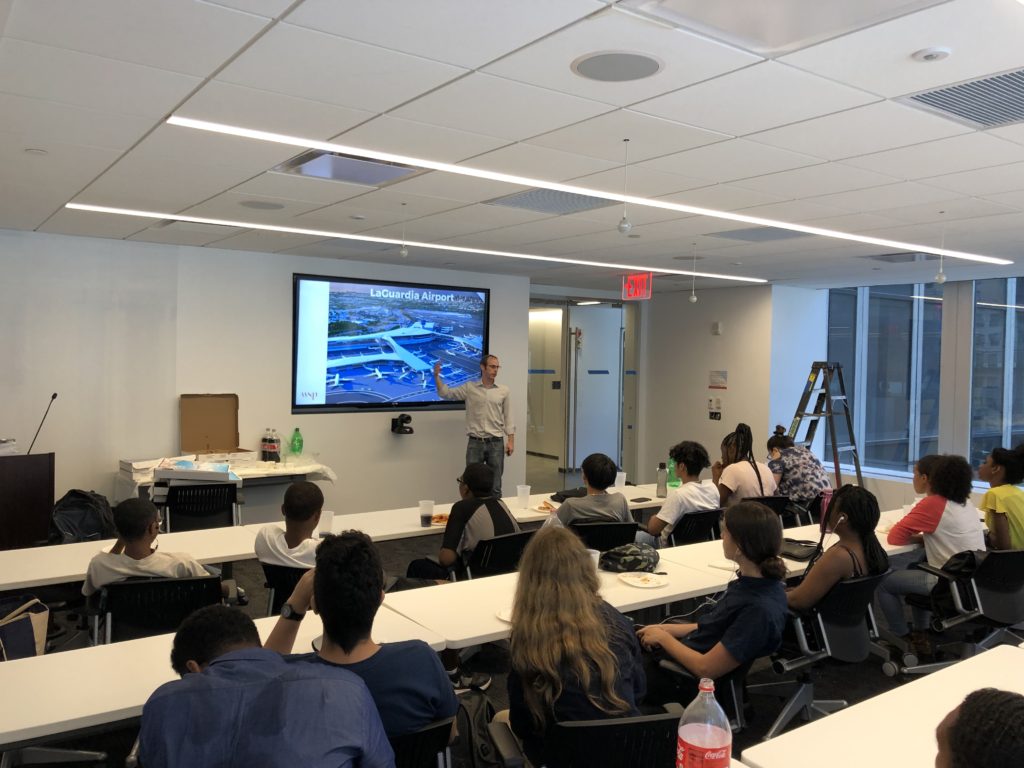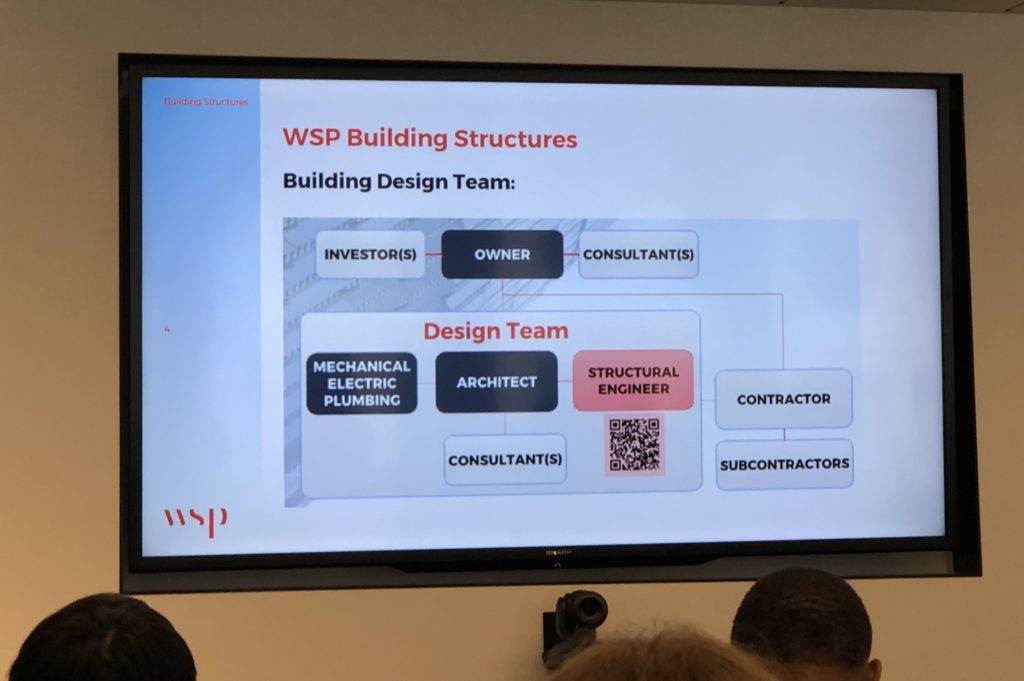
This summer, WHSAD students who have been participating in the SYEP Career Clue program have been granted several opportunities to travel to various firms to meet with architects, construction managers, engineers, and other professionals who work in the building process. These trips have provided students with insights as to what it takes to succeed in such firms, the collaborative processes involved in designing structures, and the need to approach projects with an open-mind and creative vision. All of these experiences have been possible due to the support of the Salvadori Center and its teachers, Roxanne Mejia, Lauren McIntyre, and Nina Romova.
The following student narratives about the August 1st trip to engineering firm, WSP, illustrate how participating students are making the most of their summers and how the Career Clue program and the Salvadori Center have served to enhance WHSAD student growth.

On our trip to the WSP engineering firm, I saw that the design of an engineer is worth a lot when it comes to the construction of a public or private structure since the engineer has to approve everything that will be used in construction. I learned that the cost of material, construction and finishing are very expensive. We saw some examples of WSP buildings, both completed and under construction, at Hudson Yards.
Another point discussed during our trip is how there are different types of engineers such as structural, civil, and mechanical engineers. This shows that those involved in the construction process that have a certain focus and work on a specific part of the structure. Mechanical engineers focus on everything that has to do with plumbing, electricity, and water supply. The structural engineer focuses on the making of the building, from its skeleton to the skin of the building.
One of the projects that the company is working on now is the new LaGuardia Airport building, which consists of many civil, mechanical, and structural engineers from WSP. We saw various images of the LaGuardia project and discussed aspects of the building such as traffic flow, duration of construction, and security matters due to the project being an airport.
-Alexa Medina, WHSAD Junior, Class of 2021

Thursday, August 1 was an ordinary day for WSP and the several high rise constructions taking place in Hudson Yards, but not for WHSAD’s SYEP Career Clue group and me. We marveled at 509 W 34th and the planning that went into its structure. Its spiraling structure and subtle twist as it goes higher is not a simple feat, a feat you would only expect from WSP, a world class leader in the structural engineering industry.
We took a trip to the WSP engineering consultant headquarters on Thursday as part of the Career Clue program. I expected it to be just another trip, but I was taken by surprise by how much of a power house WSP is. It’s unbelievable to think that I was able to receive insight into civil engineering from the force behind One World Trade Center’s structure. Civil engineer and our tour guide, Brendan Smith, gave us a quick rundown of the planning that goes into the construction projects taking place in Hudson Yards, as well as the renovation of LaGuardia Airport that he was working on.

As we toured Hudson Yards, we learned how each building was constructed and saw the skeletons of the structures that would be occupied by people in the future. I learned how structures were created from steel beams and reinforced concrete and the pros and cons of each material. Steel is faster to erect and efficient for larger high rises while reinforced concrete has more structural support and is optimal for smaller structures. What was most interesting, however, was that some of the structures incorporated the use of both materials to maximize the structural support while minimizing the amount of time for construction.
While I don’t necessarily plan on pursuing a field in structural engineering in particular, the information I learned is still relevant to my field of urban sustainability. It is still beneficial for me to learn about the construction process to better my understanding of how we can continue to build cities while having a positive impact on the Earth for future generations. When I asked about how I can get my foot in the door and get started in the field of engineering, Mr. Smith simply replied, “Seek out any experiences and internships you can. It’s also important to attend and graduate from an accredited college to obtain a relevant degree.” WSP also provides internships for opportunity seeking college students and continues to add members to the thousands of staff employed.
-Tyler Ng, WHSAD Alumnus, Class of 2019
Thank you to the staff at WSP for welcoming us into their work environment and taking the time to provide WHSAD students with more knowledge when it comes to the process of building in New York City and around the world.
